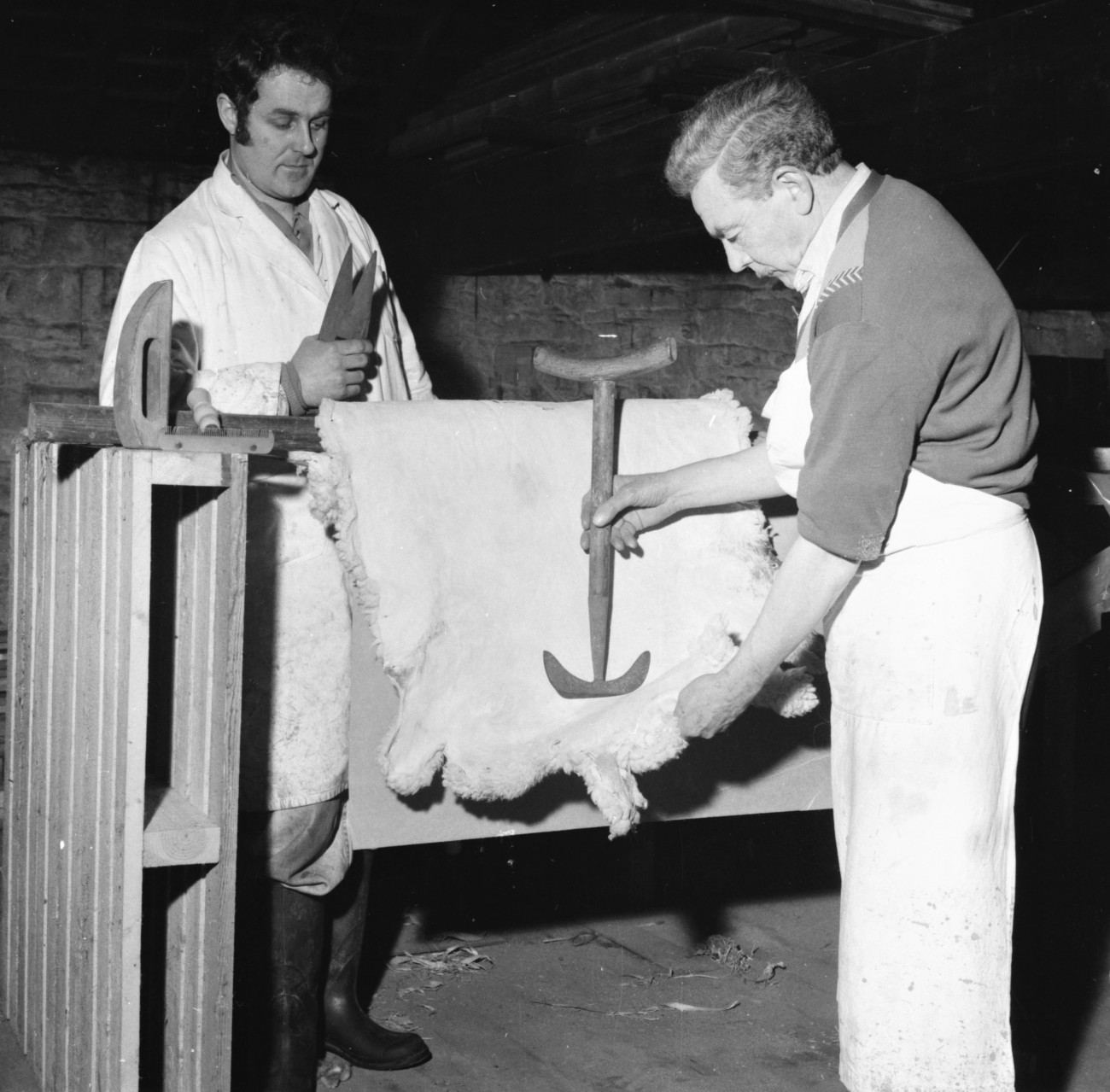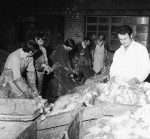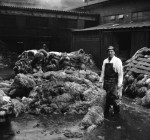One Of Country's Oldest Of Trades
2 Mar 1971
F.M.C. Burnley Fellmongery Limited, Plumbe Street, Burnley
Media Ref: BE71ng47122_a
Mr. Wallace Hodges shows Pat Hird how it used to be done in the old days. Mr. Hodges served 52 years on "the pulling beam" at Plumbe street works and tells a fascinating tale of his family's connection with the trade, going back to his great-granfather's time down in Kidderminster. His Cousin had offered to Towneley Craft Museum his father's indenture dated 1886 and beautifully written on vellum. The indenture bound the apprentice to his "master" for six years and imposed strict conditions governing his conduct and personal life.
From the seventh of an Express weekly industrial feature "We Can Make It" by Allan Halstead. The series outlines each firm's history and development and tells the story of ordinary people. It was linked with a competition "Unsung Hero '71" with a prize of a holiday in Ireland with a companion. To find all this series of articles search the website using the words - unsung hero.
It is often surprising how men in a tough or dangerous occupation develop a special pride in their job. You soon notice this among Burnley's fellmongers - the men who take the skins from slaughtered sheep and produce wool and pelts. So far as Burnley is concerned that now means a subsidiary of the Fatstock Marketing Corporation, a nation-wide group specialising in various aspects of meat production and sale. They took over the Plumbe Street premises of Samuel Smith and Sons, a firm founded in Colne over a century ago and have just acquired the adjoining Dean Mill which gives double the working space to keep pace with a 300 per cent increase in the number of sheepskins processed over the past few years.
Fellmongering claims to be the oldest trade and has certainly been practised locally since the first sheep roamed our hillsides, the wool went to Yorkshire for weaving cloth and the pelts for a variety of uses at tanners' hands. Once all the skins came from within 25 miles but now they are bought nation-wide and internationally. The firm is building up a new trade with Eastern Europe where the winter climate calls for warm sheepskin and wool garments. The majority of the wool still goes to Yorkshire mills, but pelts are sold further afield, with Italy and Germany taking increased amounts.








